France has an abundance of young talents playing domestically in every season and it’s always interesting to watch them and follow their progress. Lately, many clubs in top leagues in Europe have been turning their eyes to see what sort of gem they can find in the depths of French football and it’s not rare that they eventually find an incredibly impressive teenager playing in Ligue 2 who has the potential to be special.
One of those high potential teenagers is Noah Diliberto of Valenciennes. The 2001-born central midfielder can play in any central positions as a midfielder and has shown a lot of talent this season. Mainly deployed as a central midfielder, Diliberto has scored and assisted a goal each from 14 Ligue 2 appearances with Valenciennes this season.
This tactical analysis/scout report will take a detailed look at the player’s abilities and role in Olivier Guégan’s tactics at Valenciennes.
Physique and coordination
Diliberto is 1.75 m tall and weighs 65 kg. He has a rather small frame with a lean build and not particularly developed upper and lower muscles. It’s quite clear right from the start that Diliberto is not a very strong player. He can be seen struggling to protect the ball and seems to get outmuscled quite often when in possession, even against players with a similar build. This is mainly why he will usually avoid playing with his back to goal and he always looks to avoid getting himself under pressure by not dwelling on the ball for too long. It’s pretty much the same when out of possession too.
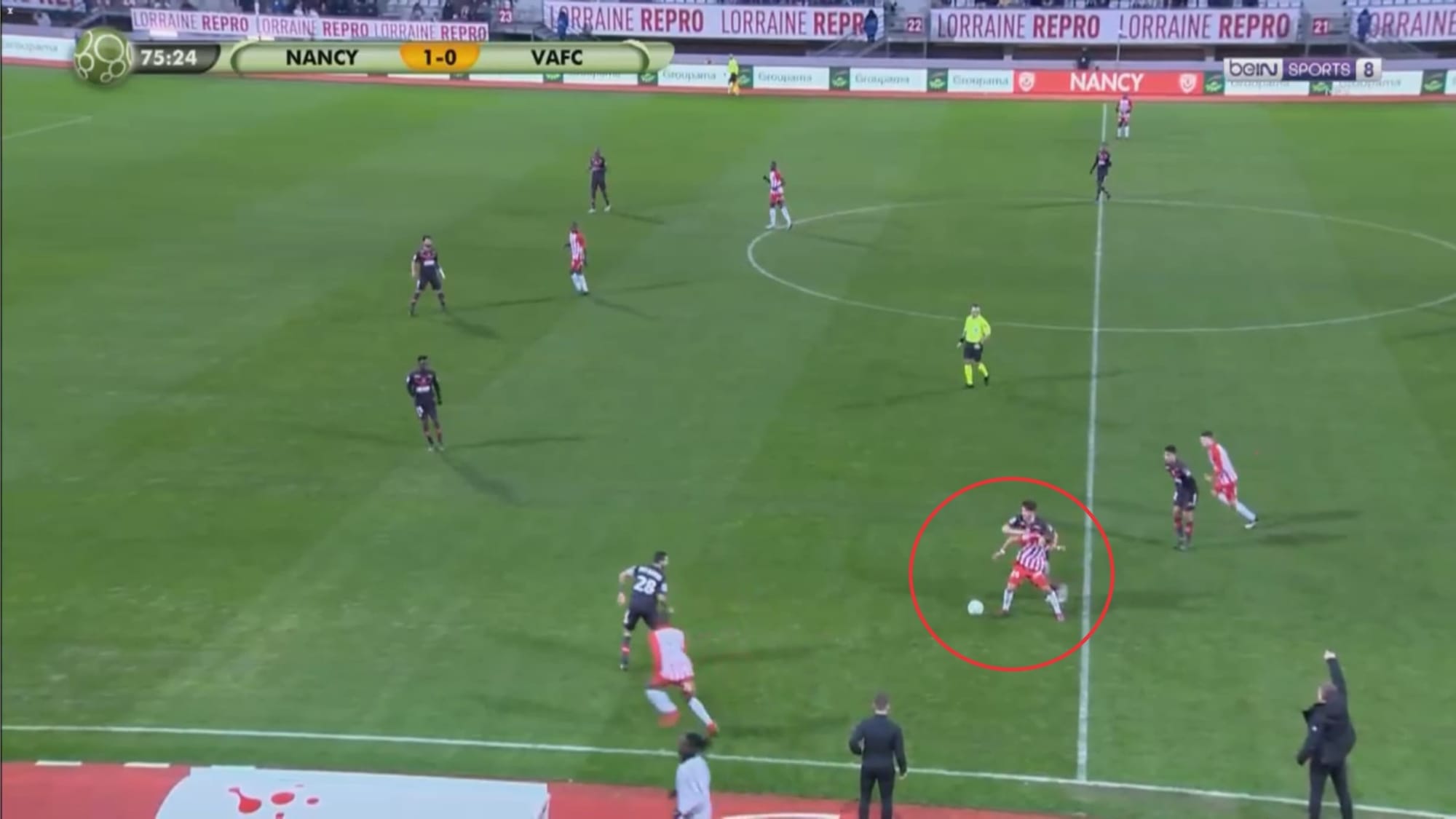
In the image above, for example, Diliberto can be seen really struggling to move his opponent off the ball and win the duel. This often leads to him getting desperate to win it and starts using his arms to push or pull his opponent which can result in a foul.
Not only on the ground, but Diliberto is also particularly weak in aerial duels too.
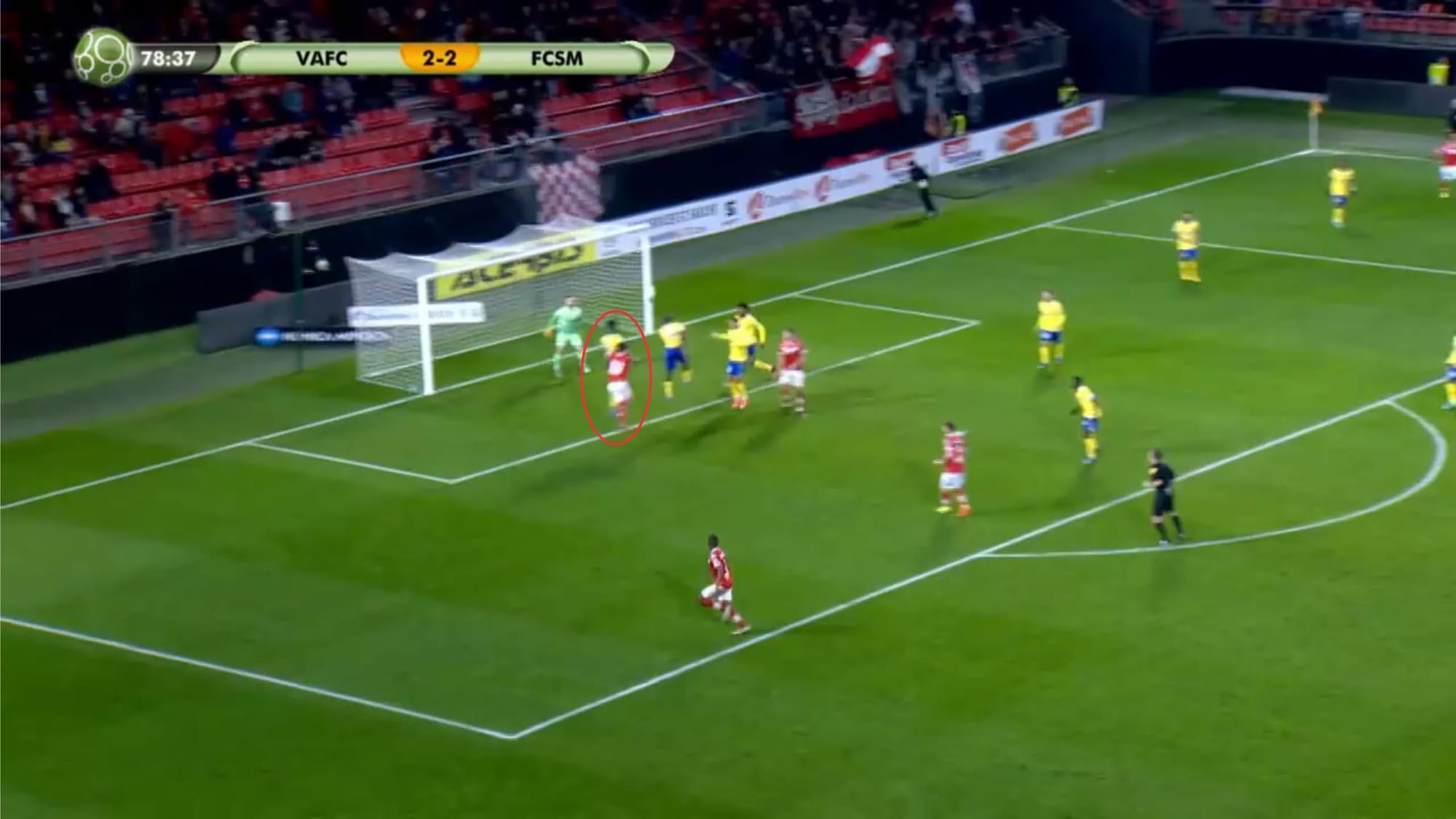
Above you can see Diliberto getting beaten to the ball when duelling for a cross inside the opposing team’s box. The main problems for Diliberto when it comes to aerial duels are his lack of height as well as lack of strength. Despite being able to leap decently, he’s still unable to reach a very good distance vertically and that is problem number one. Problem number two is his lack of strength. He’s also easily outmuscled when duelling for aerial balls and that means opponents will be able to gain an advantage against him in a duel. However, despite often being dominated when in aerial duels, Diliberto’s ability to read the flight of the ball and position himself well usually helps him win aerial duels. He can be seen occasionally winning it just by being in the right place and at the right time while his opponent misses the ball by mistiming his jump or misreading the flight of the ball.
Diliberto averages 3.54 aerial duels per game with a winning rate of 37.1% which is not a very impressive number but he certainly doesn’t need to worry as it’s not really a very crucial part of his game.
Despite his lack of strength and weakness in physical duels, Diliberto is certainly gifted with explosiveness and pace over short and long-range distances as well as a low centre of gravity and excellent mobility and coordination.
Due to this, Diliberto will mainly look to quickly turn and avoid pressure upon receiving the ball. This can compensate for his lack of strength because, as mentioned before, he’s usually unable to hold off his defender(s) when in possession so quick turns and avoiding pressure using his sharpness over a short distance as well as impressive agility and balance can be very beneficial.
On and off the ball, he seems to be very good at controlling his body. He’s able to turn and change directions very quickly, and never really seems to struggle when doing so although changing directions when on the ball (especially at high speed) can be a bit of a problem for him which will be mentioned later in this tactical analysis/scout report. Aside from being able to manoeuvre comfortably, he can often be seen making small accelerations and decelerations as well as feints to dismark himself or beat his man; and once again, this can be particularly useful to compensate for his lack of strength.
He’s certainly not lacking pace over medium-long distance too as he’s often involved in transitions (offensively and defensively) and can be seen being able to cover large distances pretty quickly when pressing, tracking back, or pushing forward.
Another physical aspect worth mentioning here is his endurance. It can be said that he has a pretty good level of endurance as he can be seen covering a decent amount of area on the pitch and maintain a very stable performance throughout the full 90 minutes. He certainly doesn’t stand out as a very energetic player but he tends to use his energy smartly. For example, he doesn’t seem to run a lot but is quite effective in pressing and this is mainly due to his ability to read the game well and position himself in the right place and at the right time. Therefore, he often doesn’t need to cover too large of a distance to press a ball-carrier or intercept the ball and he doesn’t need to spend a lot of energy moving around to press. In short, he tends to make everything very effective and efficient.
Even in the latter stages in the game he can still be seen actively contributing both offensively and defensively for his team, although there seems to be a tendency that he’ll become reluctant to sprint to cover large distances in the latter stages of the game.
Ball-receiving and dribbling
The main thing that’s very impressive about Diliberto is his excellent spatial and positional awareness which perhaps has been mentioned both explicitly and implicitly in the previous section (and will be mentioned even more) in this tactical analysis/scout report.
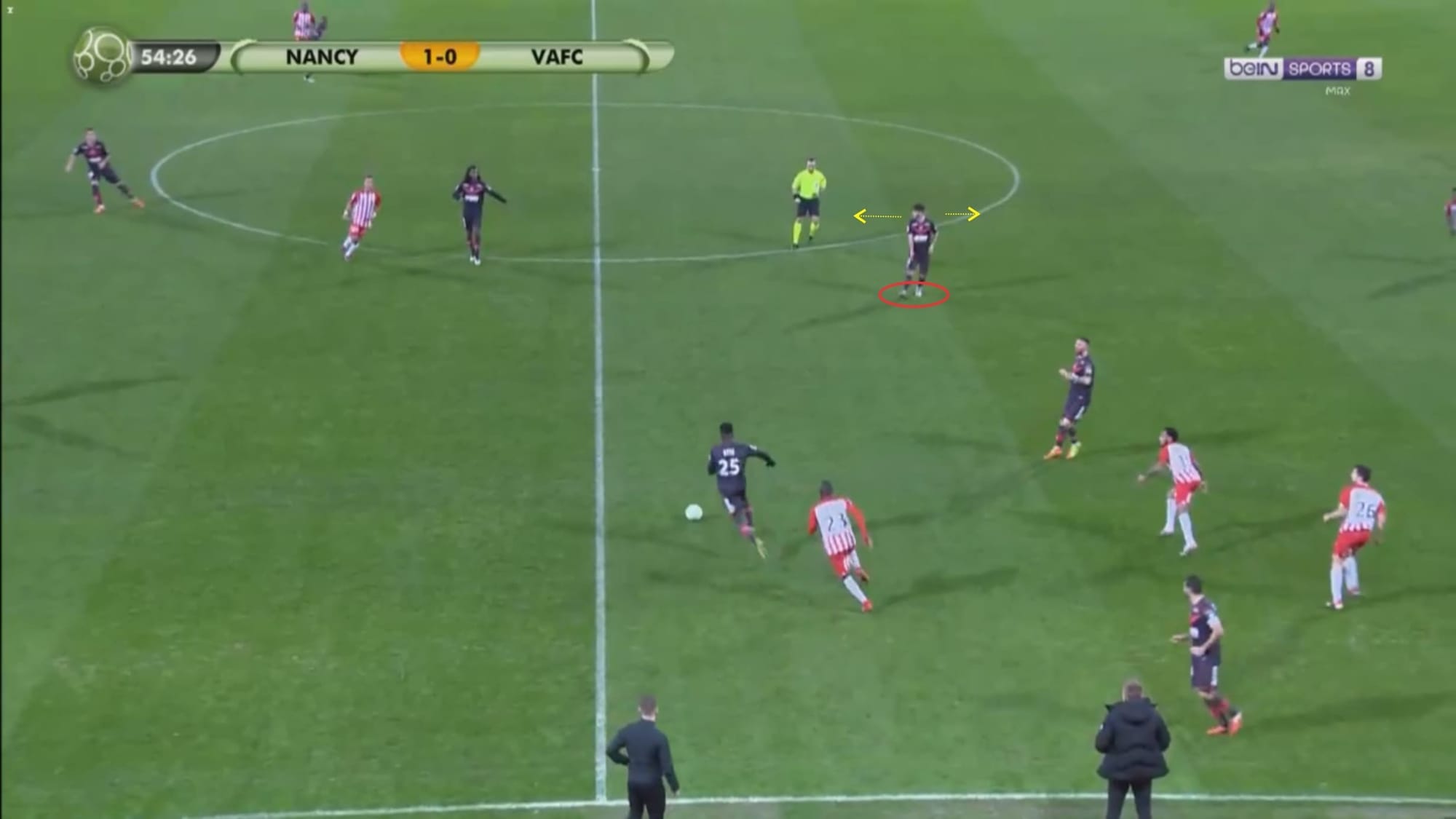
Diliberto always shows the desire to have the ball at his feet by actively moving and seeking space as well as communicating with his teammate(s) and asking for the ball. Prior to asking for the ball and then having the ball played towards him, Diliberto always scans and checks over his shoulder multiple times to gather information and get a good look of what’s around him. Upon having the ball at his feet, he will also look up quickly several times and not fixate his eyes on the ball. This ultimately affects his decision making positively as he can be seen making quick, smart decisions immediately after receiving the ball. Quite different from players who rush their decisions, Diliberto always seems calm but always swift and calculated. This way he can always make sure he’s one step ahead of his opponents.
Diliberto usually likes to receive the ball on the half-turn. Prior to receiving the ball, he’ll prepare by adjusting his body shape and will look to keep it open rather than closed. Upon receiving the ball, he’ll try to receive with the inside of his back foot and open his shape to get a good vision of the pitch. Occasionally, he can also be seen controlling a pass with the inside or outside of his front foot which may seem uncomfortable and risky but his touch usually seems quite neat and the ball usually doesn’t bounce up or away from him. He seems quite comfortable receiving either with his right or left with no apparent difference in terms of quality.
As mentioned before, Diliberto has good agility and balance and he usually uses feints to dismark himself or beat his man.
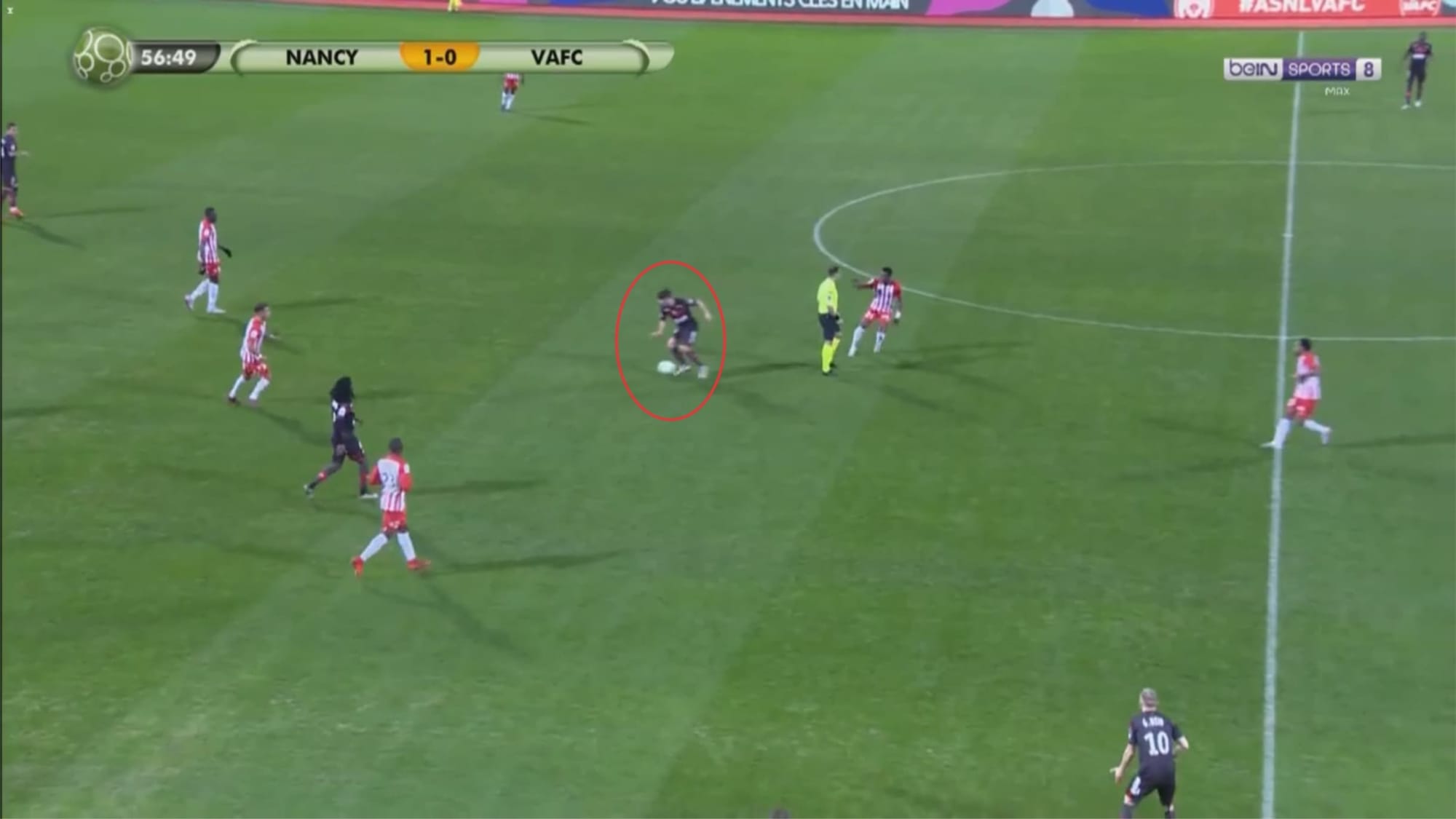
In the image above, for example, Diliberto took the first touch with the inside of his right foot and slid the ball towards his left side and dropped his left shoulder, leading his opponent into thinking he’s going to move that way. However, he quickly switched into pushing the ball with the outside of his right foot and changed directions which put his opponent off balance, freeing him from his marker in the process.
Despite having good touch when receiving the ball, one thing that can be seen when he’s in possession is that he seems to be a bit struggling to control the ball properly when changing directions at high speed. Though he can control his body properly, controlling the ball at high speed can be a bit of a problem for him as he can occasionally be seen almost losing control of it and has to take a few extra touches when turning, which slows him down and can potentially lead to loss of momentum when in attack or attacking transitions. He’s usually quite quick to regain his balance and control of the ball so this is not a major problem in his game.
Though Diliberto has a good mix of agility, balance, and coordination as well as good technical ability on the ball, he tends not to dwell on the ball and doesn’t try to dribble or take on his man very often. He mainly prefers to keep the ball rolling quickly and will look to take only one, two, or three touches after receiving the ball before playing it towards his teammate.
Diliberto has an average of 1.11 dribbles per game, completing 45.5% of them. He also has an average of 5.26 offensive duels per game with a pretty decent success rate of 44.2%. Often playing in tight spaces, Diliberto usually prefers to combine quickly in attack rather than taking too long on the ball. The low number of dribbles certainly is not because of his poor confidence on the ball but merely his preference. Meanwhile, the success rate of his dribbles and offensive duels perhaps can be attributed to his lack of strength rather than lack of flair and technique on the ball as whenever he’s aggressively and physically approached by an opponent, he can be quite easily pushed off the ball.
Distribution and chance creation
Looking at the way he plays, it’s quite clear that distribution and chance creation are his strongest attributes in the game.
Valenciennes can’t really be described as a possession-heavy team but they’re certainly quite flexible. Against a low-blocking, highly defensive team, Guégan’s side are usually quite patient and will look to maintain the ball. Meanwhile, they’ll be quite direct against teams with a medium or high block and with moderate or aggressive pressing.
Diliberto’s role as a central midfielder may vary and this will be explained with much more detail in the next section. This section will take a look mainly at his passing tendency and technique as well as vision and awareness.
Below you can see his pass maps in four different matches in Ligue 2.

As can be seen, Diliberto plays a pivotal role when it comes to circulating the ball and maintaining possession as well as progressing the ball. In the pass maps above, you can see his tendency to play the ball towards both flanks in quite a fair manner, either using lateral passes or diagonal passes. The length of his passes seems to vary as well. He can be seen playing a few medium and long passes though short passes are most common.
Statistically, Diliberto averages 29.87 passes per game with a success rate of 79.3% which may seem rather low for such a proficient playmaker and chance creator. However, what needs to be put into context is he tends to get involved and exchange passes in advanced areas and often he will find himself in a very difficult circumstance, often completely isolated from his teammate and under pressure. Naturally, playing inside the opposing half means much less time and space and more pressure and a smaller margin for error so the number of completed passes is actually quite normal.
Looking back at his pass maps, he can also be seen completing a lot of passes inside his own half but he does sometimes like to try risky passes into the final third and into the box, which may potentially reward him and his team handsomely though there’s a high possibility of it being unsuccessful. Diliberto averages around 6.48 passes into the final third, completing 73.4% of them. He also has an average of 1.21 passes into the box, though with a lower success rate of 25%.
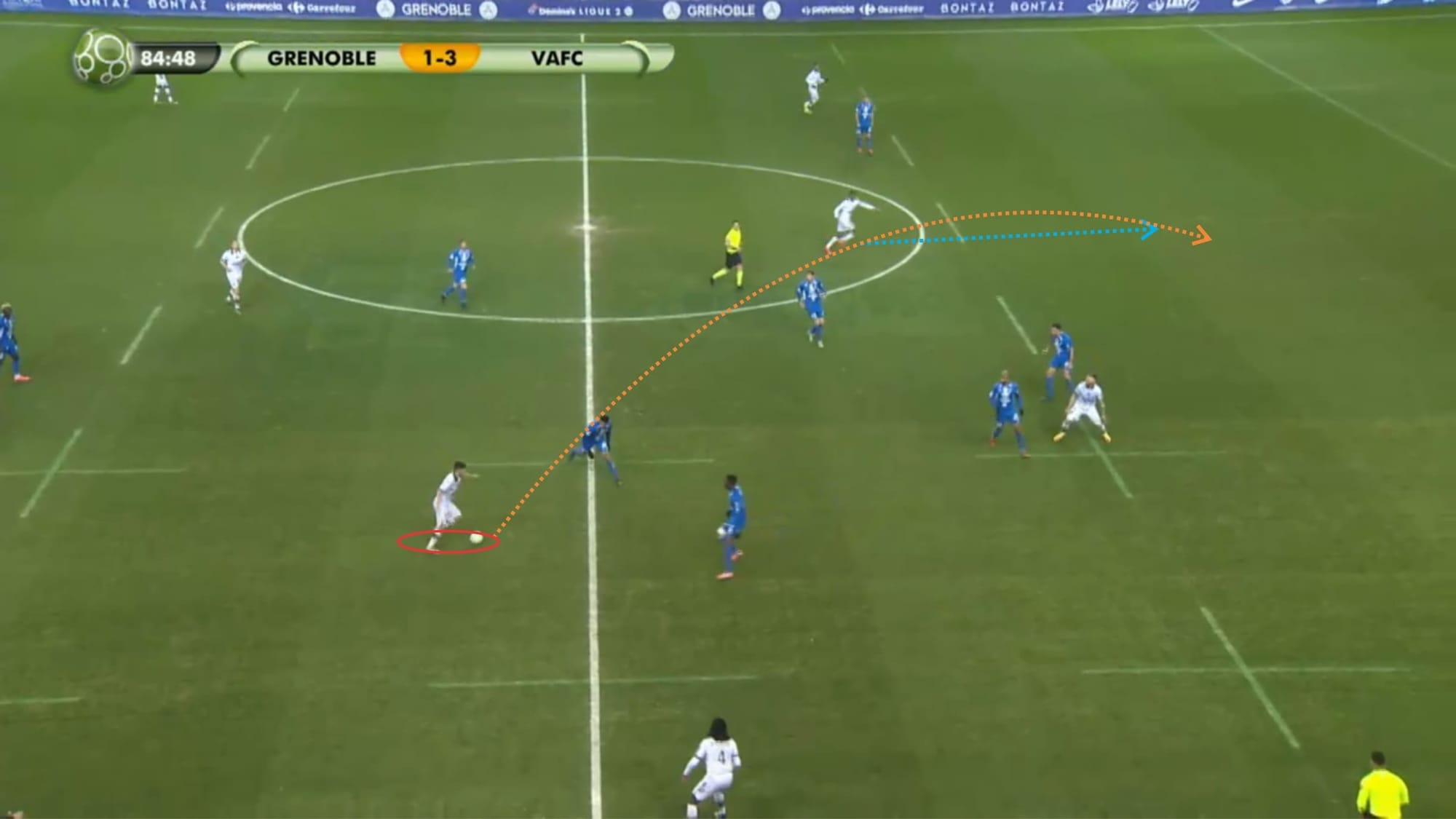
When it comes to distribution, Diliberto displays impressive vision and awareness as he’s often able to spot free space and a running teammate. In the picture above, for example, after beating his man, Diliberto lifted his head up and took a quick look to gather information. Just with that one swift scan, he’s able to spot his teammate’s run and execute a well-timed and well-weighted pass despite the opposing goalkeeper managing to rush off his line very quickly and intercept the ball in the end. This not only shows excellent vision and awareness but also intelligent decision making as well as a high level of confidence in his own ability. He could have simply played a safer, easier pass towards teammate Sessi D’Almeida on the flank or a straight pass towards the striker (who’s actually offside by a slight margin) or even play the ball back if he’s not confident and brave enough in passing.
In certain situations, he may also look to improvise.
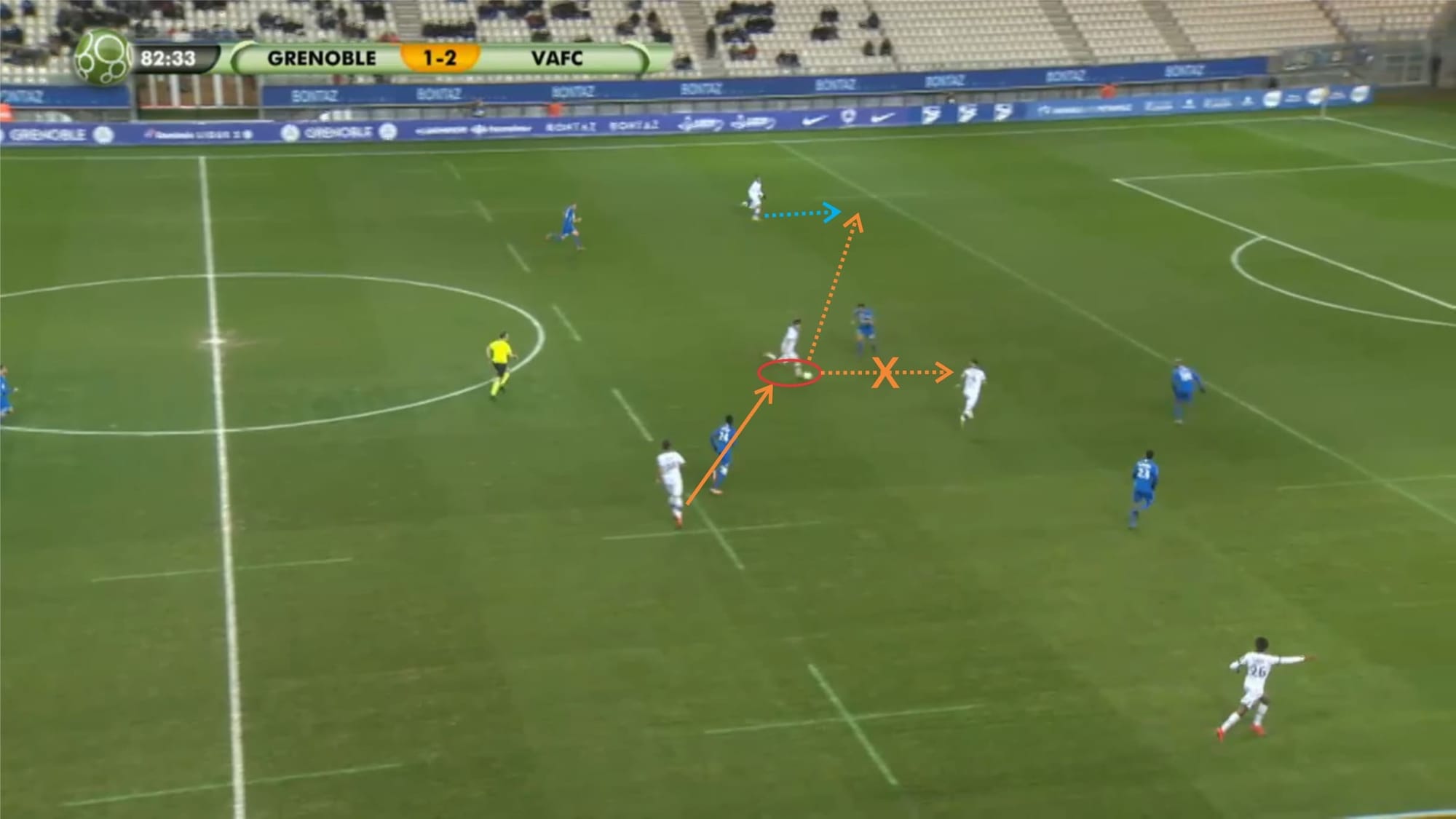
In the situation above, for example, prior to receiving the ball, Diliberto scanned his surroundings multiple times. Upon receiving the ball, he lifted his head up and took a quick look again and then made his decision. Instead of playing the easier, obvious pass towards his teammate in front of him, he played the ball towards a teammate making a run behind the back of his defender instead while disguising his intention in the process. This situation eventually resulted in Valenciennes’ third goal against Grenoble in this match.
His technique is always good and consistent. He’s able to play short, medium, and long passes with the perfect amount of power and impressive precision. This can make him an especially dangerous player if left unmarked or given space.
Tactical tendencies and role in Valenciennes’ tactics
As mentioned previously, Diliberto mainly plays as a central midfielder at Valenciennes though sometimes he’s deployed in a deeper or more advanced role in the centre of the midfield.
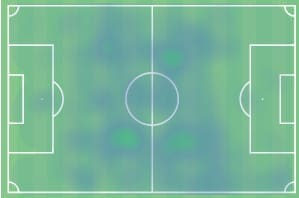
Above you can see his heat map from this season with Valenciennes. As you can see, he covers quite a lot of ground around the middle third. His coverage stretches from one flank to another. Depending on the manager’s instructions and his supposed role on the pitch, he does have certain tendencies when it comes to positioning and movements.
When paired up with a more offensive partner in the centre of the field, Diliberto will adopt a more defensive mindset and provide defensive cover by holding his position in and around the middle third rather than actively roaming around in advanced areas.
In the match against Nancy-Lorraine (20th matchday), for example, Guégan originally set up a 3-5-2 formation but switched it to a 3-4-3 when defensive midfielder D’Almeida was subbed off and replaced by winger Kévin Cabral. Thus Diliberto was effectively playing with an offensive-minded midfielder Gauthier Hein in central midfield.
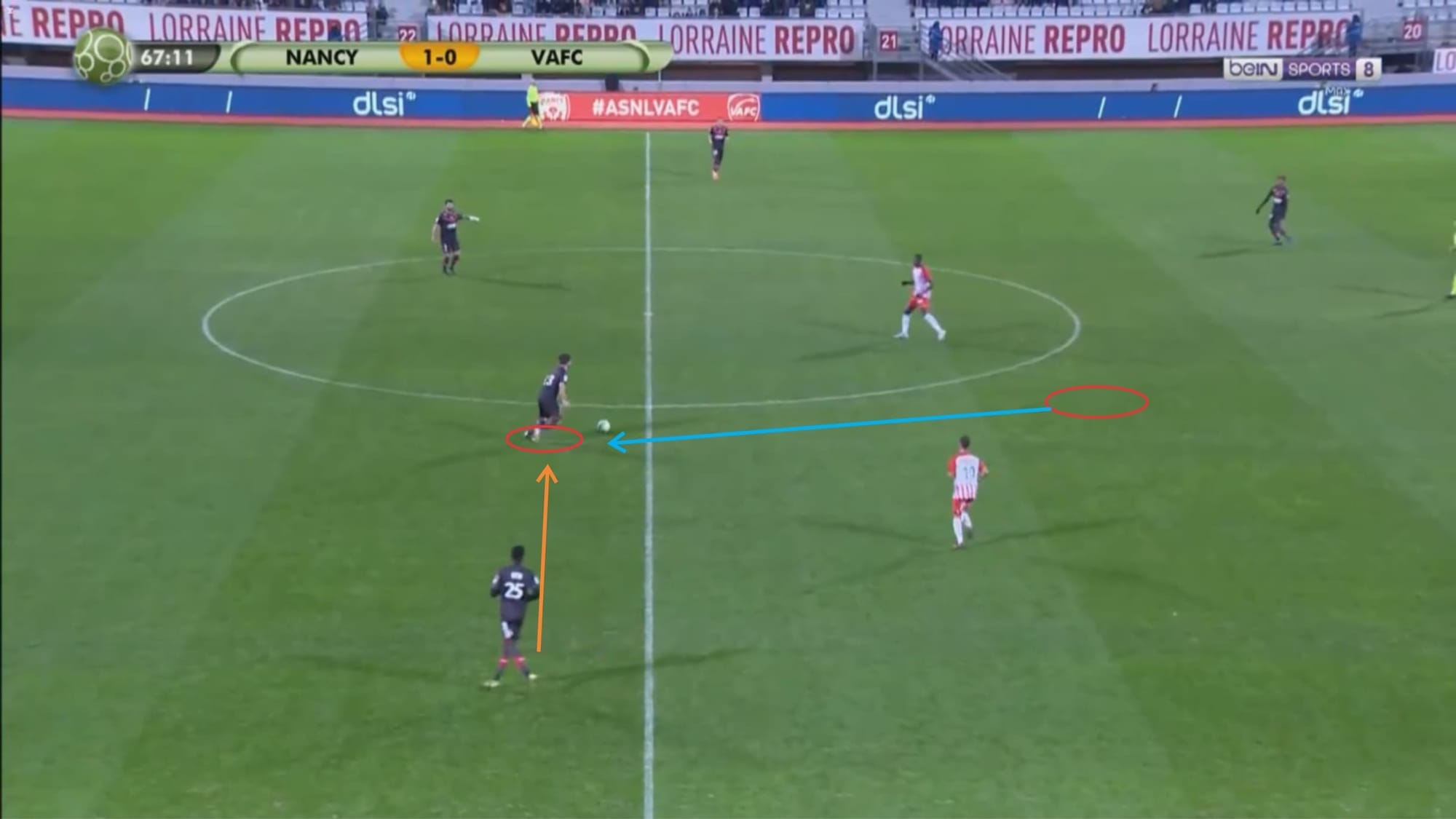
In this case (see image above), when starting short from the goalkick and playing from the back, Diliberto will drop and be the first pass in midfield while his more offensive partner stays in a more advanced position. He’ll be the pivot and will look to help circulate and maintain possession as well as progress the ball when whenever possible.
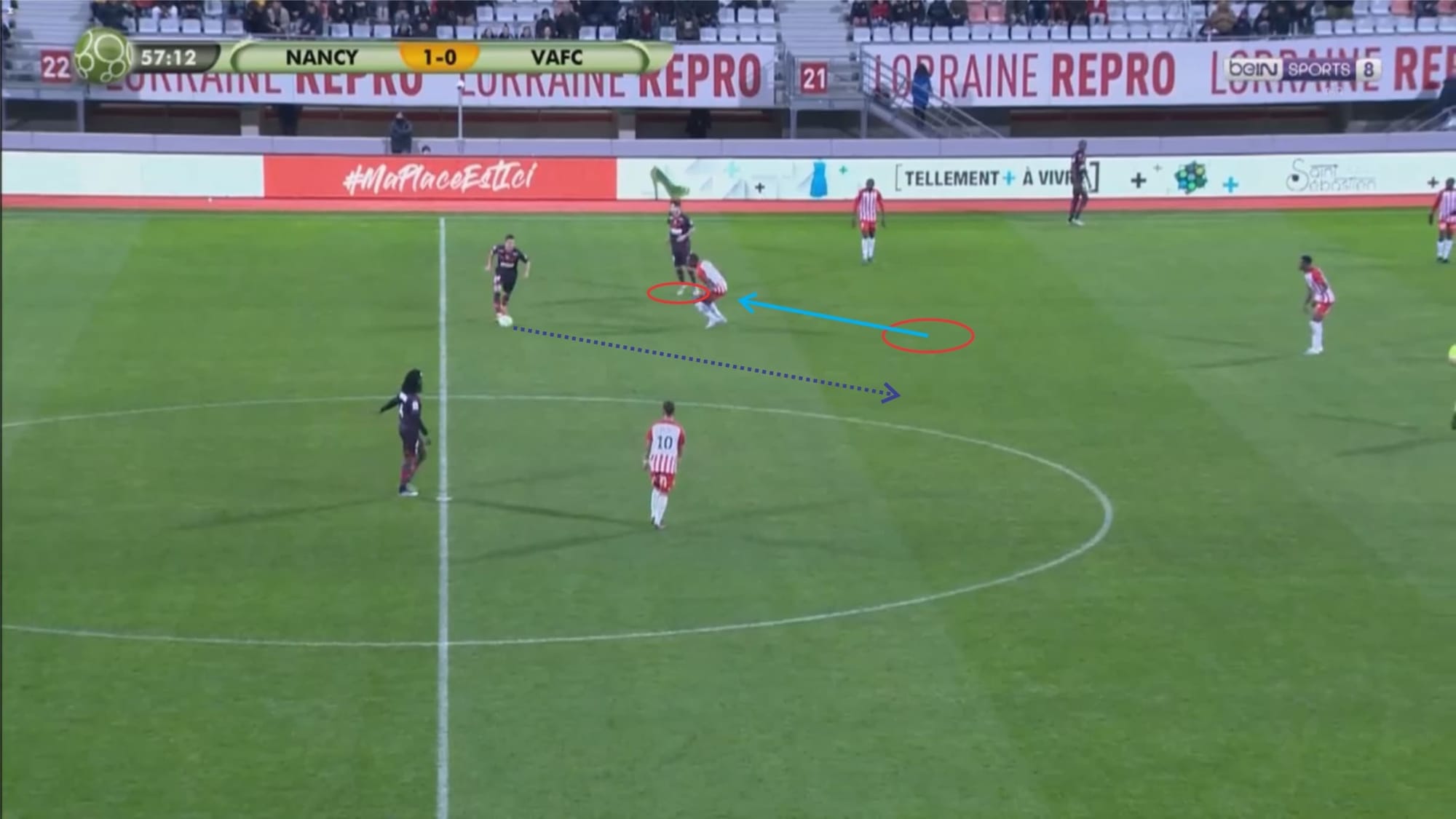
At times, an opposing player will look to mark him or block the passing lane towards him to prevent progression and instead of dropping and sitting in between the centre-backs, Diliberto will move to drag his marker aside instead and open up space for the ball carrier to drive into. This can be seen in the image above.
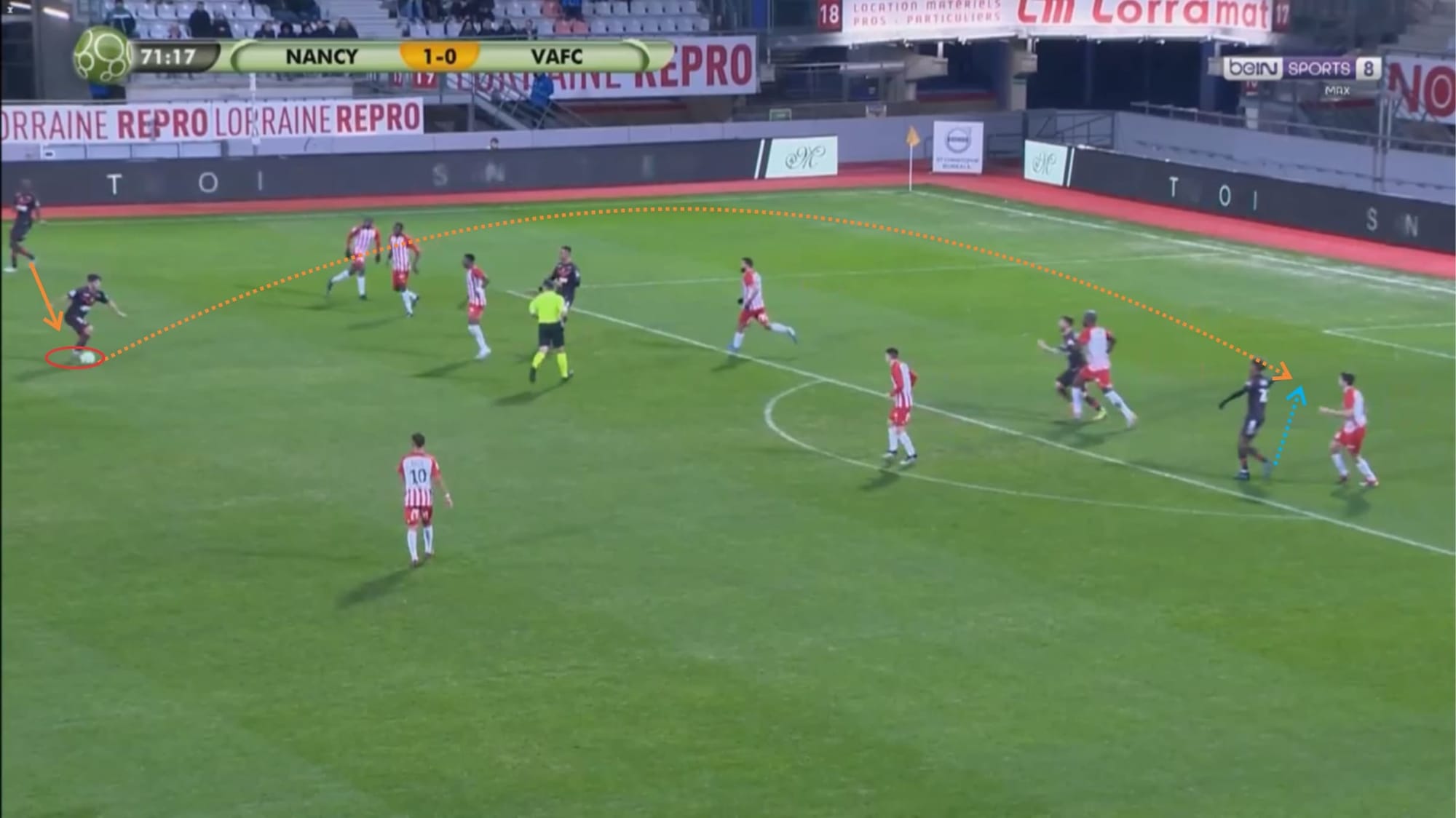
When the ball gets into the final third, he’ll float around the edge of the box, helping the team circulate the ball in advanced areas whilst also looking to play risky passes into the box whenever he sees an opening, which you can see in the image above. Aside from that, he’ll also be keeping distance with the opposition’s potential passing option(s) and will be looking to intercept the ball or press the ball carrier when the ball is played in order to recover it high up the pitch.
Meanwhile, if he plays with a more defensive partner or the formation has a defensive midfielder (usually 3-5-2 or 4-1-3-2/4-3-1-2), then Diliberto is allowed much more freedom and creativity upfront but will also retain some of his defensive duties.
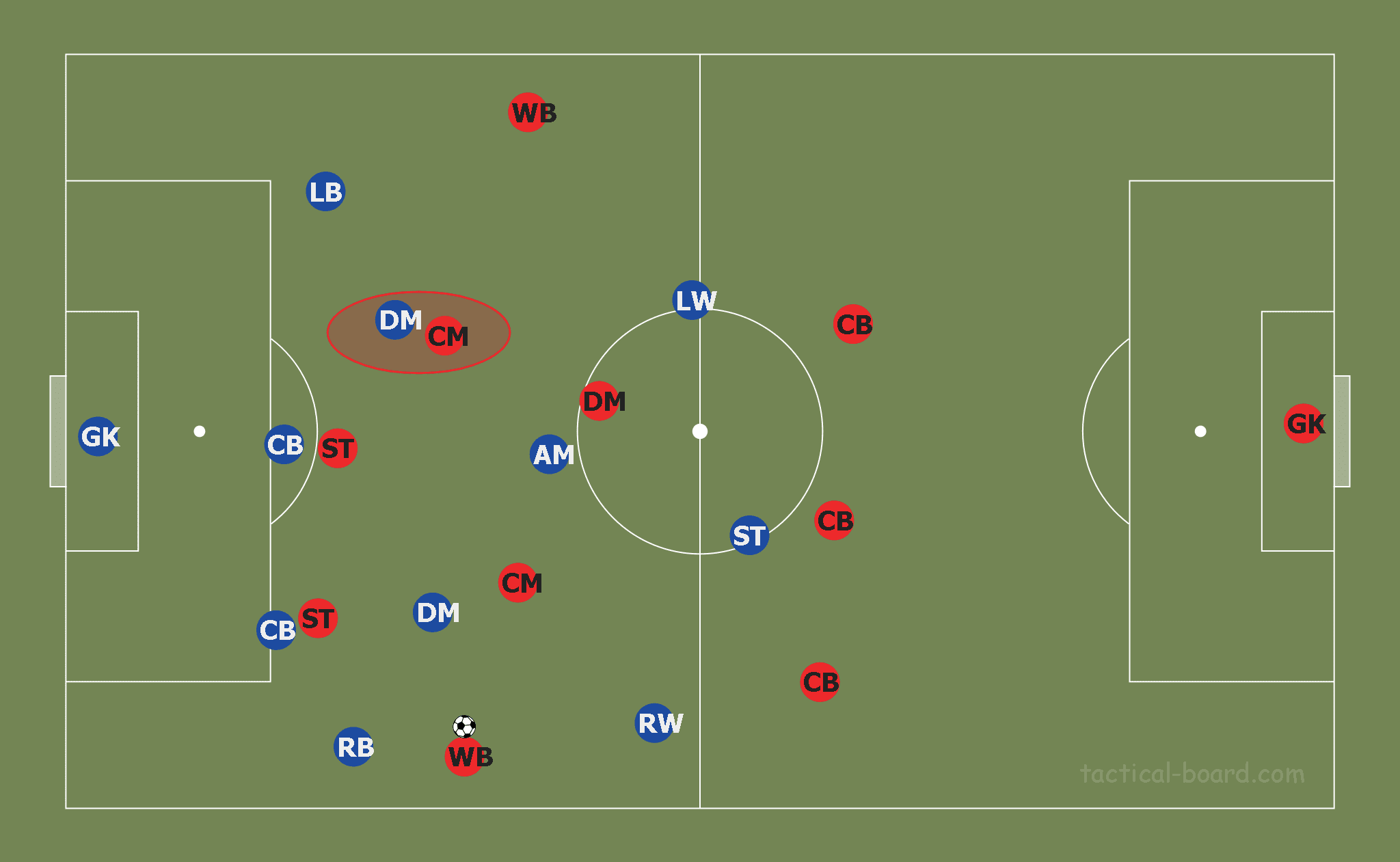
In the match against Grenoble (28th matchday), for example, as you can see in the picture above, Diliberto was played as a right-sided central midfielder with Julien Masson as his partner on the left side and D’Almeida at the bottom of the three-man midfield. Diliberto can be seen being marked and followed around tightly by Grenoble’s defensive midfielder Ibréhima Coulibaly in this match.
Diliberto can be seen staying in advanced areas and roaming in and around the final third very often. When the ball was on the far side, Diliberto pushed forward, momentarily creating a 3-4-3 shape which can eventually turn into a 3-2-5 shape if both wing-backs pushed higher up the pitch. However, when the ball-near area was overloaded and his team were outnumbered on that area, he could be seen moving closer towards that area to provide numerical advantage.
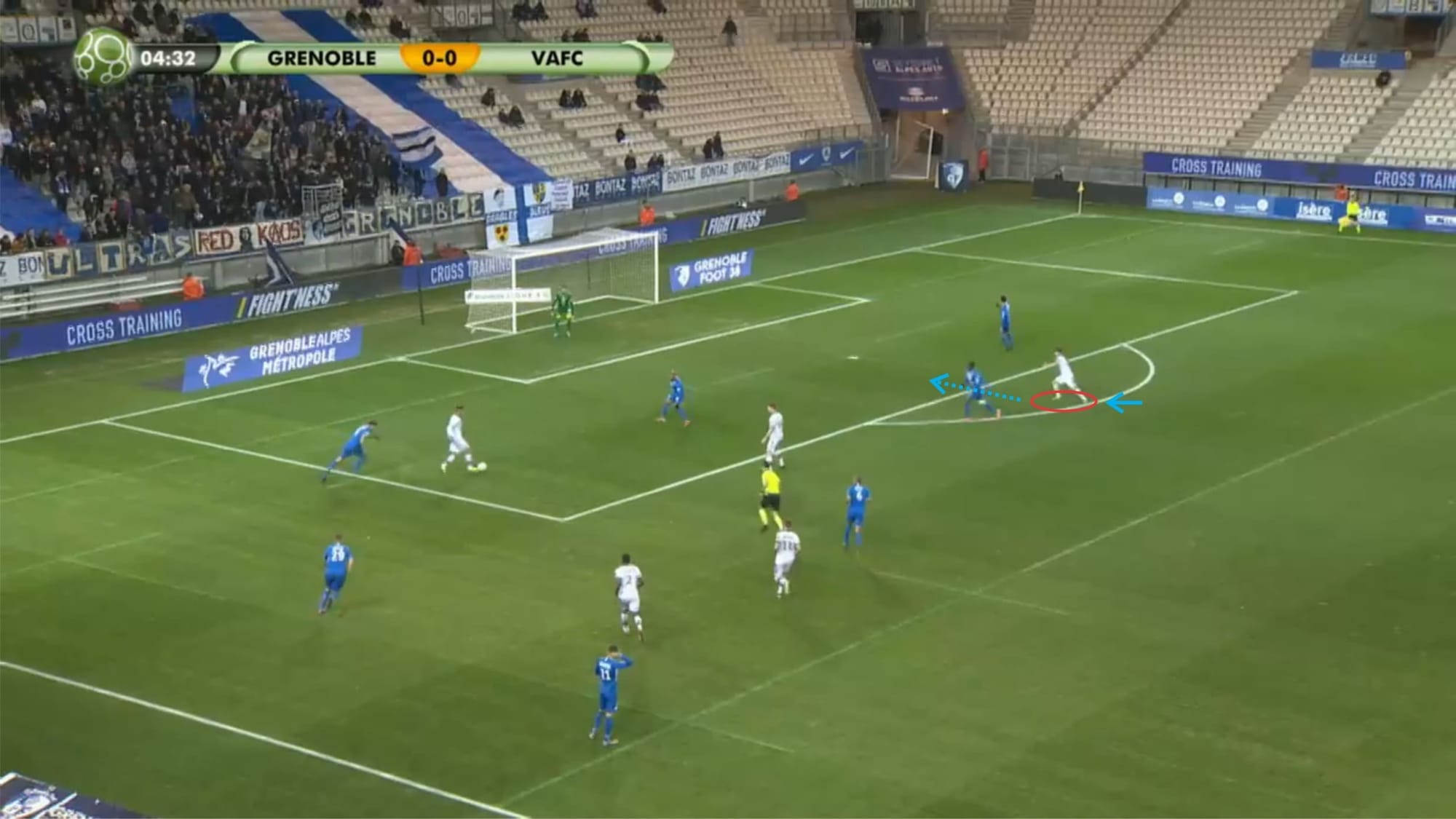
Occasionally, Diliberto will also look to make a run into the box, as can be seen in the image above. His positioning seems to be quite flexible when inside the box. At times he can be seen standing around the near post while other times he can be seen looking to sneak behind the back of the opposing defender and attack the far post. Some other times he arrives late and looks to stay at the edge of the box to receive cutbacks or to anticipate second balls.
He averages 1.11 touches inside the opposition box per game, similar to his attacking midfield teammate, Hein, who averages 1.49 touches inside the opposition box per game but higher than deep-lying playmaker Masson who only has an average of 0.44.
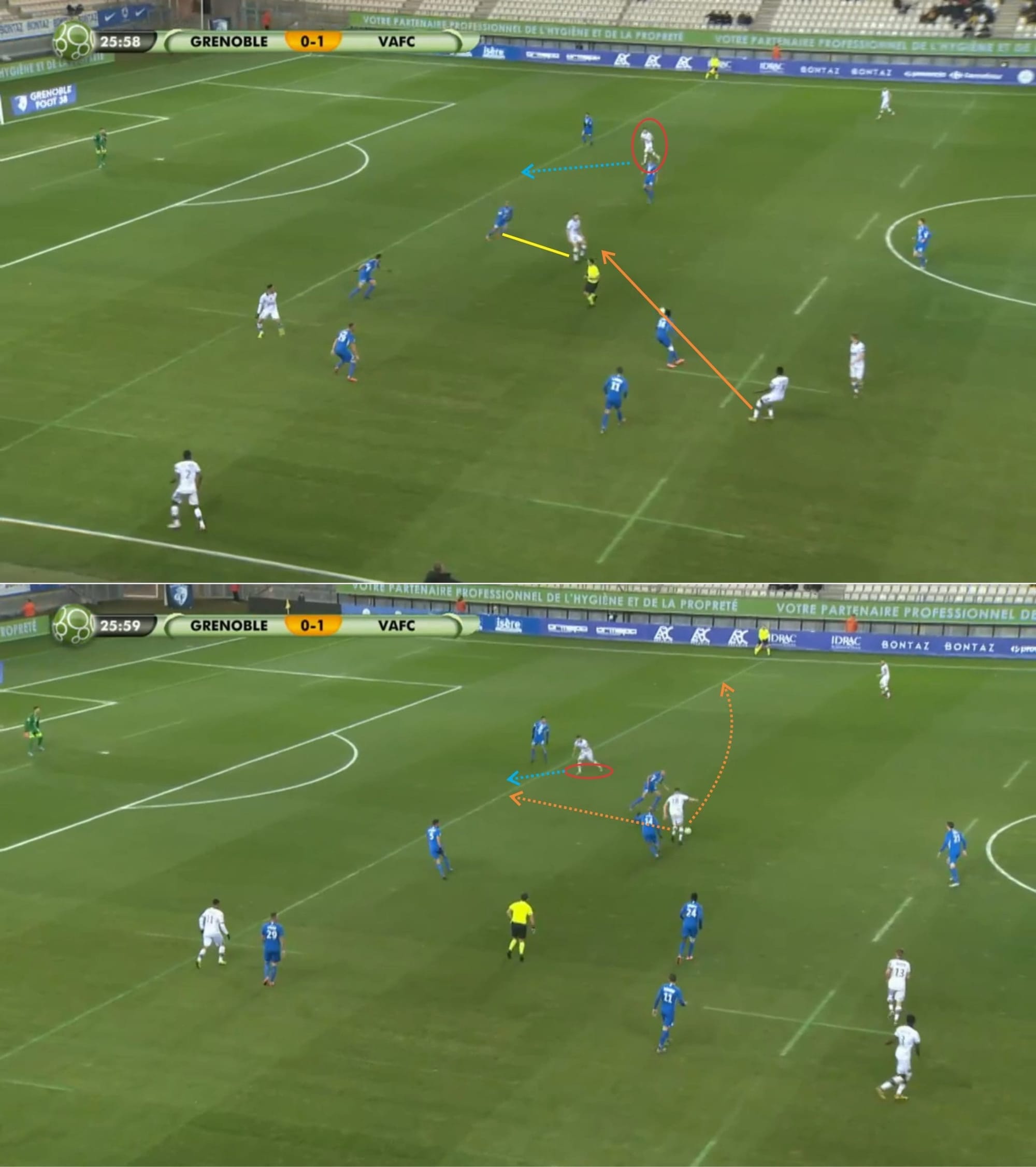
Diliberto often displays impressive ability to spot and exploit space as well as understanding with his teammates. In the image above, Valenciennes can be seen assuming the aforementioned 3-2-5 shape in attack with the two wing-backs sitting high and Diliberto just floating around the final third, sitting quite high inside the right half-space.
In the image above, striker Baptiste Guillaume dropped to receive whilst dragging out the opposing centre-back in the process and creating space behind the defence. Diliberto spotted this but delayed his run, waiting for the right moment first. When Guillaume received the ball and turned, Diliberto quickly accelerated into the open space. However, Guillaume, who had two passing options in that case, chose to play the ball wide towards the right wing-back instead of taking a risk playing a through pass towards Diliberto. Despite not getting the result he wanted, he still did show impressive awareness as well as tactical understanding and intelligence when it comes to off the ball movements as he’s able to see and react properly to a situation (opposing centre-back dragged out) and he knew when to make his run.
Lastly, aside from his offensive contributions, his defensive contributions are also worth mentioning.
Statistically, Diliberto records an average of 8.3 defensive duels per game with a winning rate of 53.7%, which is quite impressive for someone who, as mentioned before, lacks strength. He also has an average of 5.37 ball recoveries per game (45.3% inside the opposition half) and 4.15 interceptions per game showing excellent game-reading in defence. All these numbers are actually quite impressive for a player who, at a glance, seems to be more focused in attack rather than defence.
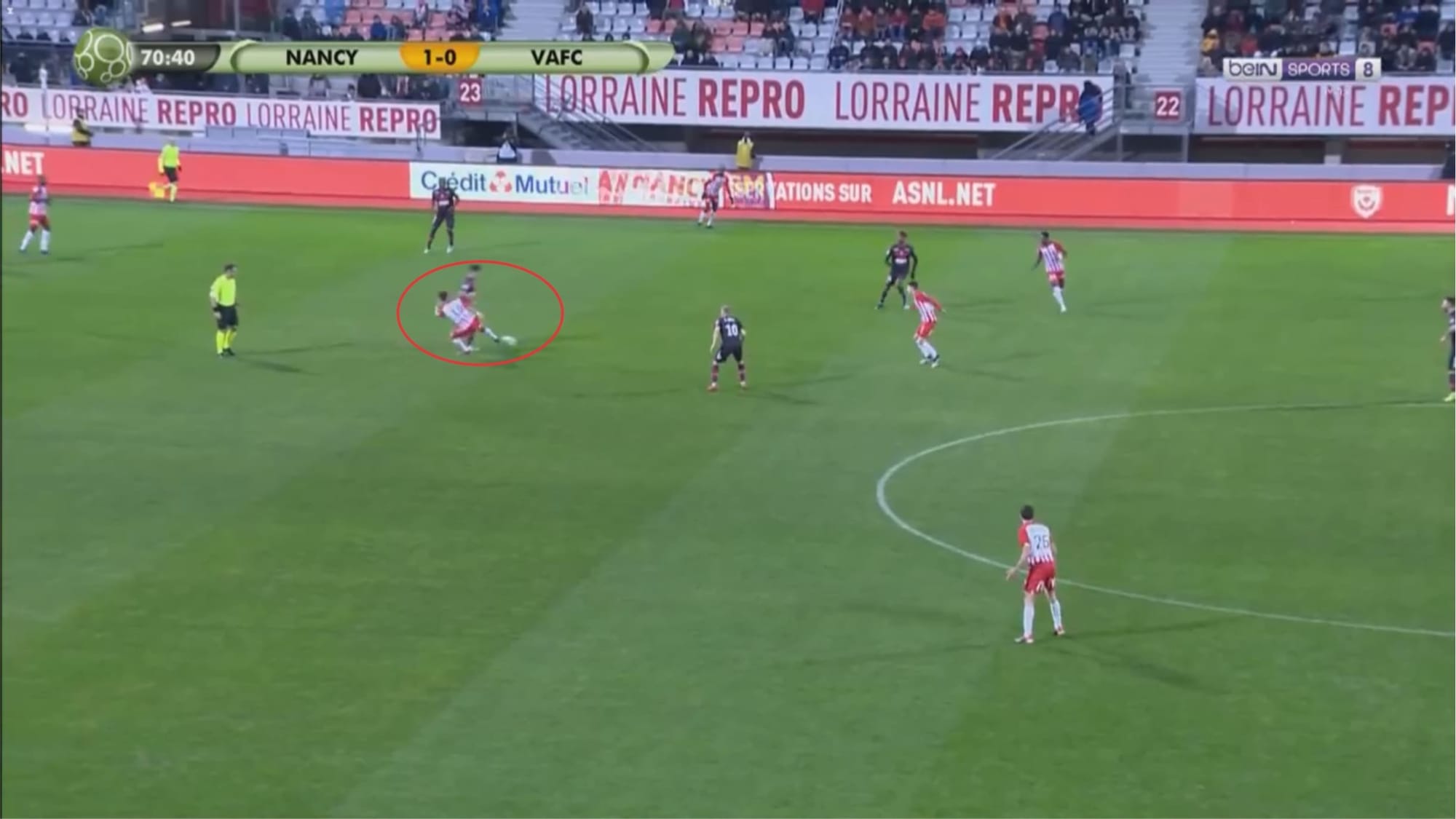
Diliberto shows superb determination and commitment in the game as he actively looks to get involved defensively which is shown by his high number of defensive duels. Though he’s not exactly a very strong and physical player, he has proven to be quite effective in winning the ball through defensive duels. This is mainly because he reads the game well and times his challenges to perfection.
In the situation above, for example, he doesn’t try to engage physically but will try to keep a good distance with his opponent and shadow his movements. When the timing is right, he sticks out a leg and commits a standing tackle, effectively dispossessing his opponent without having to engage physically, knowing he might get outmuscled and lose the duel instead if he does that.
Conclusion
Having a strong playmaking and chance creation ability, mixed with intelligent reading of the game and impressive determination and work rate both offensively and defensively, Diliberto can do what teammates Masson and Hein can do in the centre of the field though he sure still needs some support, especially defensively. Alongside PSG academy graduate Cabral, Rennes loanee Lilian Brassier, and Lille-born teammate Aymen Boutoutaou, Diliberto is one of the hottest prospects of Valenciennes and Ligue 2 this season who may make a move to Ligue 1 or other top leagues in Europe in the next transfer window – perhaps following the footsteps of fellow Frenchman Pape Gueye who signed a contract with Watford recently.
One visible weakness of his seems to be his lack of strength. Meanwhile, his technique when receiving the ball, when on the ball and when he hits the ball are already quite good though not yet perfect. Those, however, should not be a problem as he should be able to improve significantly in the aforementioned areas if he trains well and focuses on his development.
Most importantly though, Diliberto displays mature mentality and impressive football IQ at such a young age. While the average player at that age usually visibly looks raw and inexperienced, Diliberto looks like he has been playing at a top-level for a while. Aside from his composure under pressure, he’s able to control his temper very well. He rarely commits unnecessary acts of aggression and even when being on the receiving end of harsh treatment from an opposing player or not getting the decision he wanted from the referee, he rarely reacts negatively or protests and prefers to get up and get on with the game.
Diliberto has one year left in his contract as it is due to expire on 30 June 2021. With the current situation in football, his market value could potentially drop and it will probably be a good time to snatch him up for a low fee. Of course, top clubs may not want to take a big “risk” by signing an unproven 19-year-old midfielder, but I believe Diliberto can develop into a top, top player in the future.

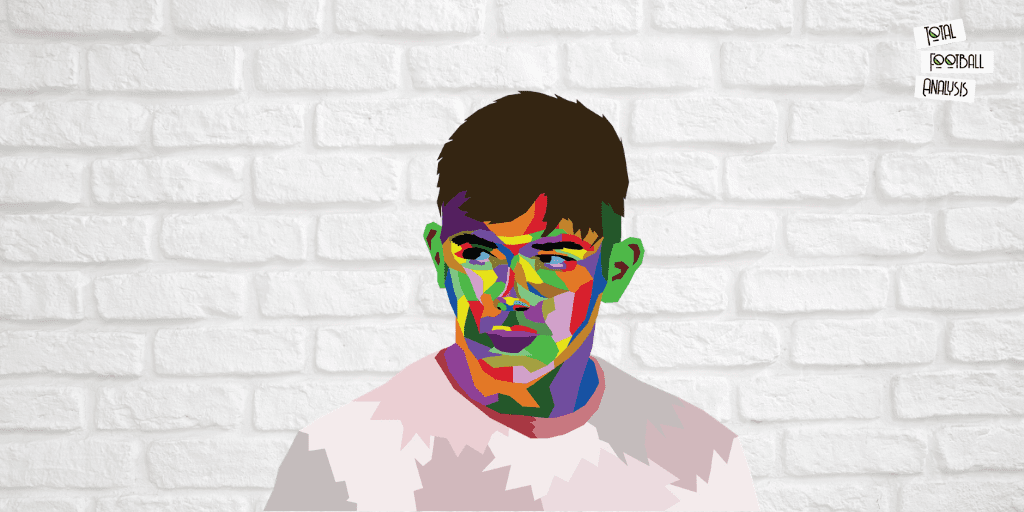



Comments